The Vibes From The Introduction Of Yangon Pop-up Project
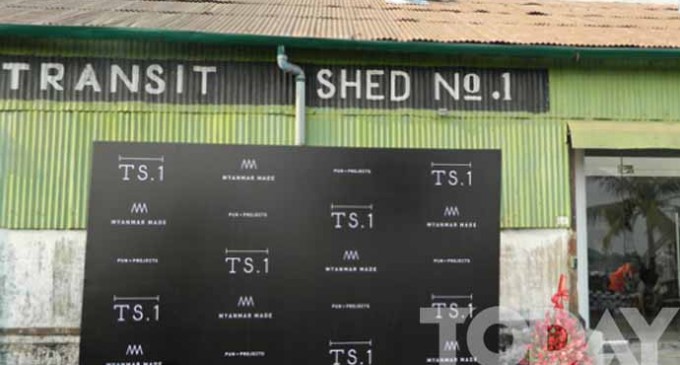
TODAY has asked those concerned of Gallery and Myanmar Made store — the two components of the first-ever Yangon pop-up project. Enquiries were on the pop-up idea on the part of Pun+Projects founder Ivan Pun, and how come the art show and creations on the part of Artist Phyo Kyi. Gallery and Myanmar Made store are open at Transit shed No 1, standing between Lanthit Jetty and Kaingdan Jetty1.
Ivan Pun
Founder, Pun + Projects
I’m deeply captivated by the jetty area. More than a riverside, it should become a destination in itself. I’m interested in creating something downtown _ a place for people to go to, Arts, retail shops and restaurants all sensibly mixed, and I’d like to see the responses on the part of people and market. The project could be said to cater for both locals and foreigners but objects at the Myanmar Made are so common to Myanmars that they would remain unappre-ciated sometimes. But Europeans love them for their being so difficult to buy in Europe. In September we’ll have another pop-up show of international fashion. I think it would really be appealing to locals.
I have done the store’s design, and will keep changing it. After this exhibition of Phyo Kyi’s on the other side we’ll have a group show in May with young Myanmar artists. A plan to call foreign artists to exhibit is under discussion. We want to do about seven shows a year. At the moment we’ll have only these two parts running, and Restaurant will open at the end of May.
Phyo Kyi
 Why your show at Transit-shed No.1?
Why your show at Transit-shed No.1?
I became friends with the director of exhibitions Nathalie of the Project 3/4 years ago, and they’ve made a call. And this series of mine originated last year.
Your objective for the exhibition of dyeing and printing works . . .
I got to pick up dyeing and printing works (of fabrics) ten years ago, and this is second time around. The title overall is bedtime thoughts, ie thoughts on my part. They are mostly biogra-phical.
How come your idea of accompanying the illustrations with text?
They’re not there for a very particular reason. For example, this screen represents some admonition my mother in Taunggyi gave in her letter to her son in Yangon University. It is used for nostalgia’s sake. When I was young, mother used to buy me Shwethway and Hla Pa journals every week. Artist U Ba Kyi’s in those journals were my favourite, and they happen here again as they supposedly suit the subject. Just before my novitiation mother bought me a booklet called Shin Kyinwut (Rules of conduct to be followed by a Novice) which contained some paragraphs for a novice-to-be to memorise; and the booklets cover is hereby used. Also, some covers of animated cartoons are used in like manner for entertainment. The written text serves no particular purpose.
Why illustrate on the silkscreen?
Dyeing and printing is an established craft. I studied watercolour painting under Saya U Khin Maung Than for some time. Back at Taunggyi after graduation I had no job, and paintings were not that brisk on activity yet. I’m compelled to join the shop of dyeing and printing works owned by Ko Myo Thit Kyi. But his father U Tin Win trained me well in the art. There were some world-renowned names already. They set me thinking wide and deep. It was quite a while back. In 2001 the earlist works of mine were on show at the biennial event held in Bangladesh. Now, it is the second time around. In the meantime I was in other fields of art. At present I have no paints or paint brushes left. I’ve decided that my interest in dyeing and printing works is not all lost to me. I’m using Maing Kaing paper beca-use of necessity. What I really want is the news-print like that used in publishing Shwethway and Teza journals. Its original colour is very appealing to me. Nowadays we use imported canvas, for lack of much-desired newsprint.


Stages to prepare a silkscreen …
The stages aren’t many, just like in the creation of images on our clothes. Films of the image go on the silkscreen, and dyeing follows. It’s the same process as used in the businesses around Shwegondine. With the same techniques we try to create Art.
What’s the difference between painting as usual and dyeing & printing works?
It should depend on the mnd. We’re only happy doing it. Medium changes, the mind stays the same.

Your next programme?
If organizers come inviting, there should be a series of shows in dyeing and printing works. But there’s no viable programme yet.
Translated by Khin Aung(English)
./wp-content/uploads/2018/10/Emirate-Online-TDY.png)



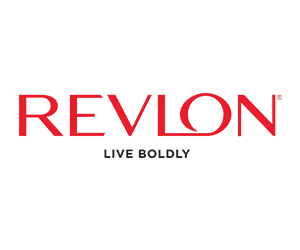
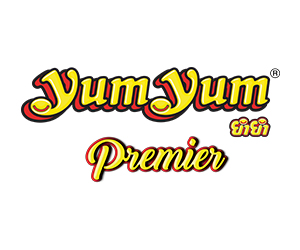
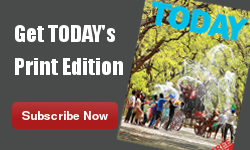








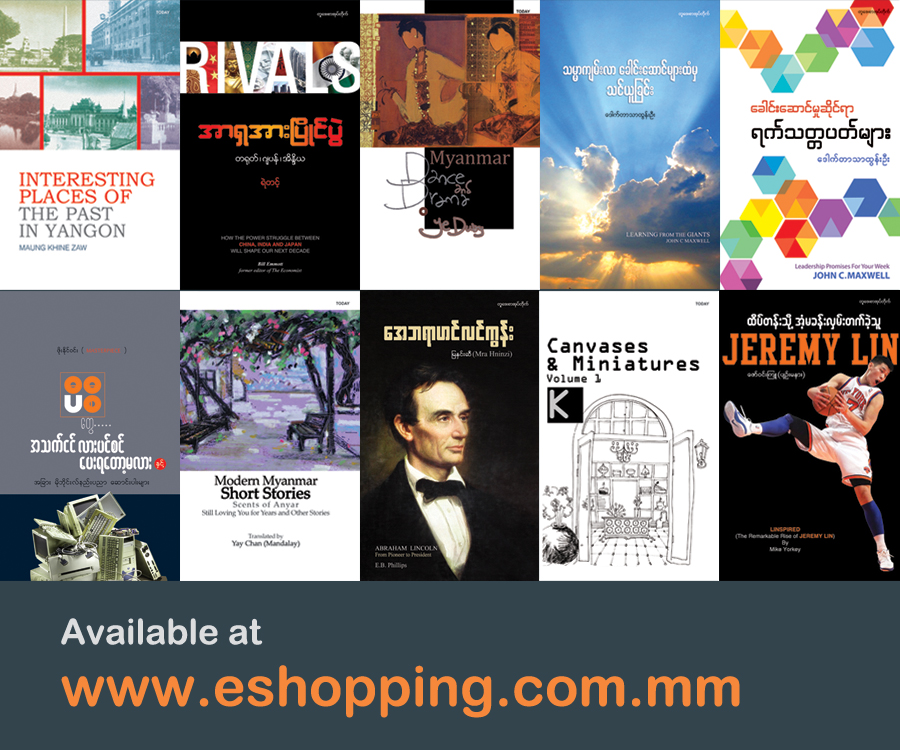


There are no comments at the moment, do you want to add one?
Write a comment